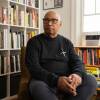This week, GBH Executive Arts Editor Jared Bowen discusses an artist-led movement to end U.S. intervention in Central America and a theatrical adaptation of Toni Morrison's debut novel.
Art for the Future: Artists Call and Central American Solidarities
On view at the Tufts University Aidekman Art Center and the SMFA through April 24, 2022
In the 1980s, as Americans became increasingly aware of the role the U.S. government had in the conflicts in Central America, a vast network of artists sprang into action. They used art to protest. But then movement became a moment — largely forgotten, until now. Art for the Future: Artists Call and Central American Solidarities, a two-part exhibition at the Tufts University Art Galleries, looks at the legacy of the Artists Call Group.
Five years in the making, Art for the Future is as much excavation as it is exhibition. “So we're just beginning to really understand again, because this is the first time that this has been reexamined since the 1980s about what happened in the effort involved here,” Bowen said. “You have to, think also doing the math, a lot of the artists who were young and taking to the streets at the time are now anywhere between 60 to 80 years old. And so this is kind of a diminishing moment to really get their stories and document this.”

The Bluest Eye
Now showing at the Calderwood Pavillion through April 9, 2022
The Huntington Theatre Company is presenting the theatrical adaptation of Toni Morrison’s debut novel, “The Bluest Eye.”
“The Bluest Eye” tells the story of Pecola Breedlove, a young black girl in 1940s Ohio,who believes that, if she could just have blue eyes, the whole world would be different for her. That she would be seen differently. Morrison was reluctant to have her work adapted to the stage and screen. This is one exception that she made, allowing the playwright, Lydia Diamond, to create this piece.
The performance features a rounded theater with tiered seating on stage, which Bowen says is instrumental to this play.
“In the past I thought, sometimes this is kind of a gimmick, but this is not a gimmick ... because it puts you in the story,” he said. “You feel you’re of this community. It is happening around you. You have this intimacy.”

What's your book adaptation? Tell Jared about it on Facebook or Twitter!




